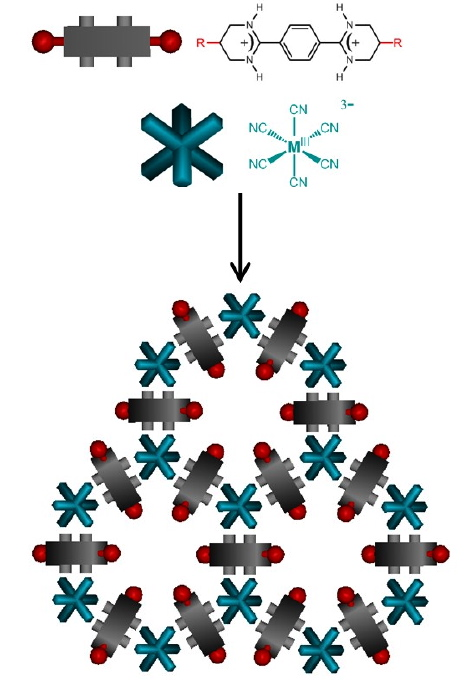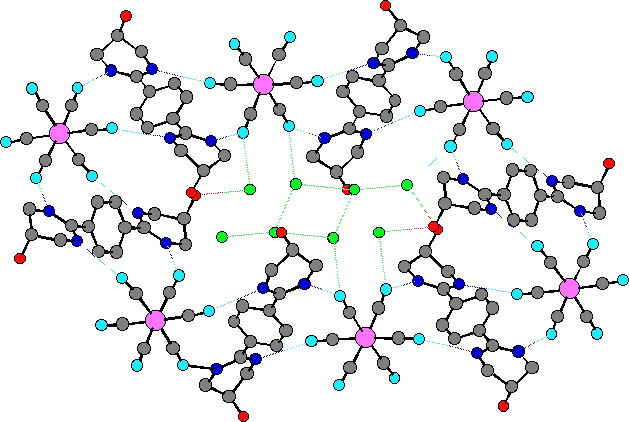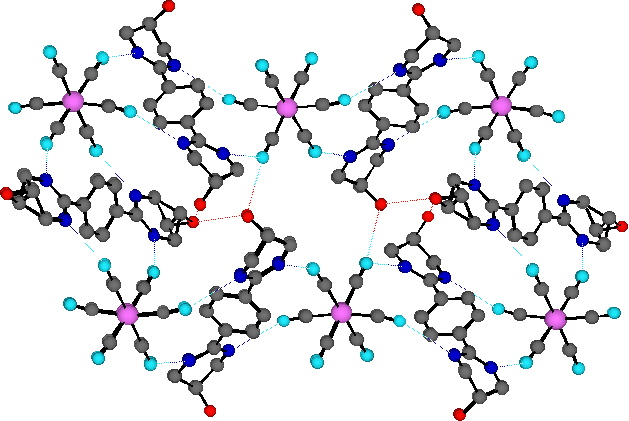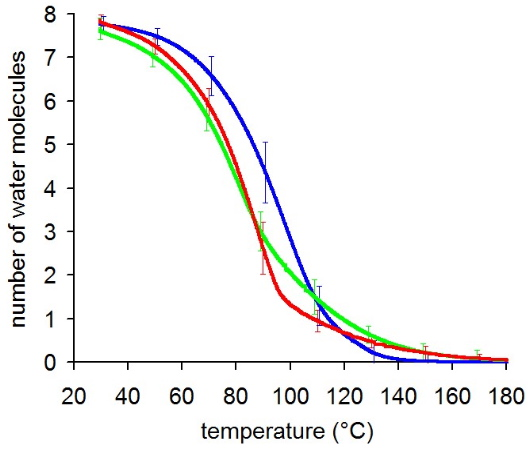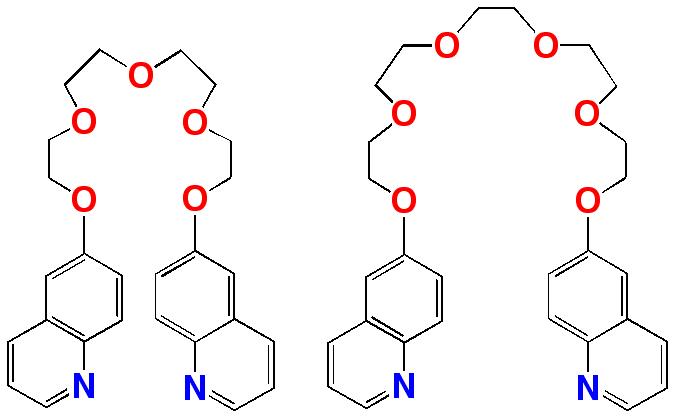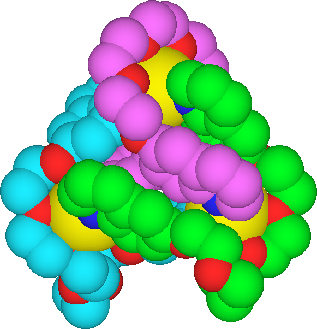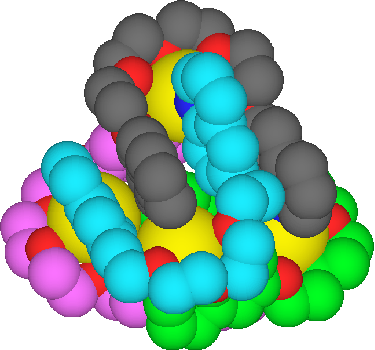Résumés Année 2008
"Molecular tectonics: control of reversible water release in porous charge-assisted H-bonded networks"
P. DECHAMBENOIT, S. FERLAY, N. KYRITSAKAS, M. W. HOSSEINI, J. Am. Chem. Soc., 2008, 130, 17106–17113. (download .pdf)
Abstract: The combinations of bisamidium dicationic tectons 1-2H+ and 2-2H+ bearing two OH groups as additional H-bond donor/acceptor sites with [M(CN)6]3- (M = Fe, Co, Cr) anions lead to the formation of robust porous crystals (decomposition temperature in the range of 240 – 300 °C) offering channels occupied by water molecules. The release and uptake of solvent molecules takes place through a reversible single crystal-to-single crystal transformation. Importantly, the temperature of dehydration can be increased by ca 40 °C through the decoration of the channels by introduction of OH groups on the backbone of the organic tecton.
|
|
|
|
"Direct synthesis and structural characterisation of tri- and tetra-nuclear silver metallaknotanes by self-assembly approach"
J. BOURLIER, A. JOUAITI, N. KYRITSAKAS-GRUBER, L. ALLOUCHE, J.-M. PLANEIX, M. W. HOSSEINI, Chem. Commun., 2008, 6191-6193. (download .pdf)
Abstract: The combination of ligands based on two quinoline units acting as primary coordinating sites connected by tetra- or penta-ethyleneoxy fragments behaving as secondary interaction sites leads spontaneously in a one pot reaction to the formation of tri- and terta-nuclear metallaorganic knots in the presence of silver cation.
|
|
|
|
"Molecular tectonics: control of pore size and polarity in 3-D hexagonal coordination networks based on porphyrins and Zinc cation"
E. KÜHN, V. BULACH, M. W. HOSSEINI, Chem. Commun., 2008, 5104-5106. download .pdf)
Abstract: In the crystalline phase, porphyrin derivatives based on two 4-pyridyl units at the 5 and 15 meso positions and two 4-aryl moieties bearing various groups (CN, OMe, OH and CF3) at the 10 and 20 meso positions lead, in the presence of zinc dication, to the formation of robust 3-D networks presenting hexagonal channels. Both the size and the polarity of the pores were tuned by the nature of the substituents attached to the two aryl groups.
 | 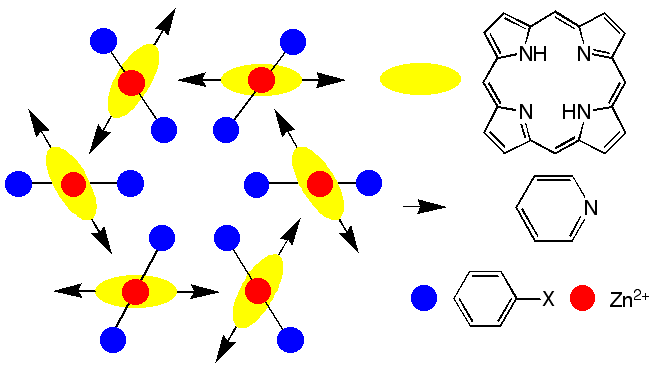 |  |
"Modular construction of a series of heteronuclear metallamacrocycles"
S. A. BAUDRON, M. W. HOSSEINI, Chem. Commun., 2008, 4558 - 4560. (download .pdf)
Abstract: High modularity in a series of heteronuclear d8-d10 metallamacrocycles built on differentiated ligands is demonstrated.
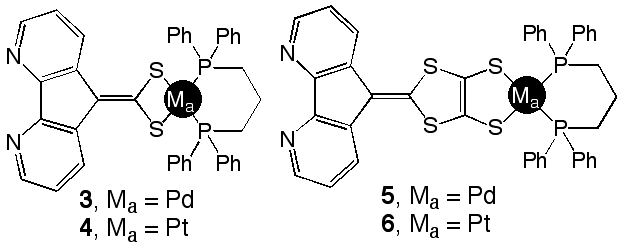 |  | 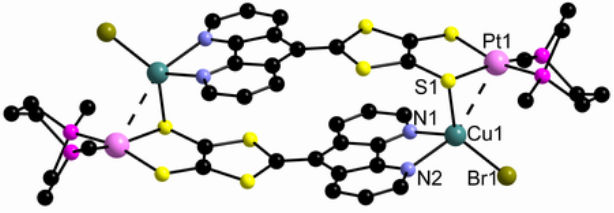 |
"Many Faces of Dipyrrins: From H-Bonded Networks to Homo- and Hetero-binuclear Metallamacrocycles"
D. SALAZAR-MENDOZA, S. A. BAUDRON, M. W. HOSSEINI, Inorg. Chem., 2008, 47, 766-768. (download .pdf)
Abstract: The amphoteric 5-(4-cyanophenyl)dipyrrin ligand offering three distinct state i.e. cationic, neutral and anionic has been exploited for the formation of a H-bonded 1-D network in its protonated form and both homo- and hetero-binuclear metallamacrocycles in its neutral and deprotonated states respectively with peculiar coordination modes.
 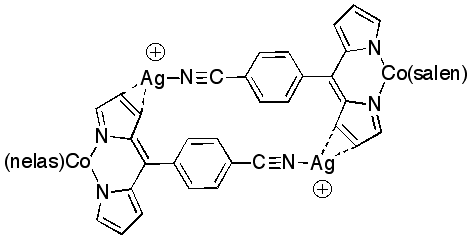 |  |  |
"Molecular tectonics: design and generation of charge assisted H bonded hybrid molecular networks based on amidinium cations and thio- or isothio-cyanatometallates"
G. MARINESCU, S. FERLAY, N. KYRITSAKAS, M. W. HOSSEINI, Dalton Trans., 2008, 615-619. (download.pdf)
Abstract: Upon combining the bis amidinium dication 1-2H+ with isothiocyanatometallates M(SCN)42- (M = Pd, Hg) or thiocyanatometallates Cu(NCS)42- anions behaving as H-bond donor and acceptors respectively, three new hybrid molecular networks have been obtained in the crystalline phase and structurally characterized by X-ray diffraction on single crystals. Whereas for the combination of tecton 1-2H+ and both Pd(SCN)42- and Hg(SCN)42- anions analogous 1-D H-bonded networks were observed, for Cu(NCS)42- anion a 2-D network was obtained. Based on structural features of both components, the formation of the two types of networks is discussed.
  |   |
"Molecular tectonics: ribbons type coordination networks based on porphyrins bearing two pyridine or two pyridine N-oxide units"
E. DEITERS, V. BULACH, M. W. HOSSEINI, New J. Chem., 2008, 32, 99-104. (download .pdf)
Abstract : Upon combining porphyrins based tectons bearing at the 5,10 meso positions either two pyridine or two pyridine N-oxide groups, with Cd2+ or Cu2+, four ribbon-type 1-D networks were obtained and structurally characterised in the crystalline phase by X-ray diffraction methods. Although, based on tecton's structural features, the formation of ribbon-type architectures could be anticipated, their deformation, resulting from the geometry of the connecting metal centres as well as the packing forces in the solid state, could not be predicted.
 |  |  |



